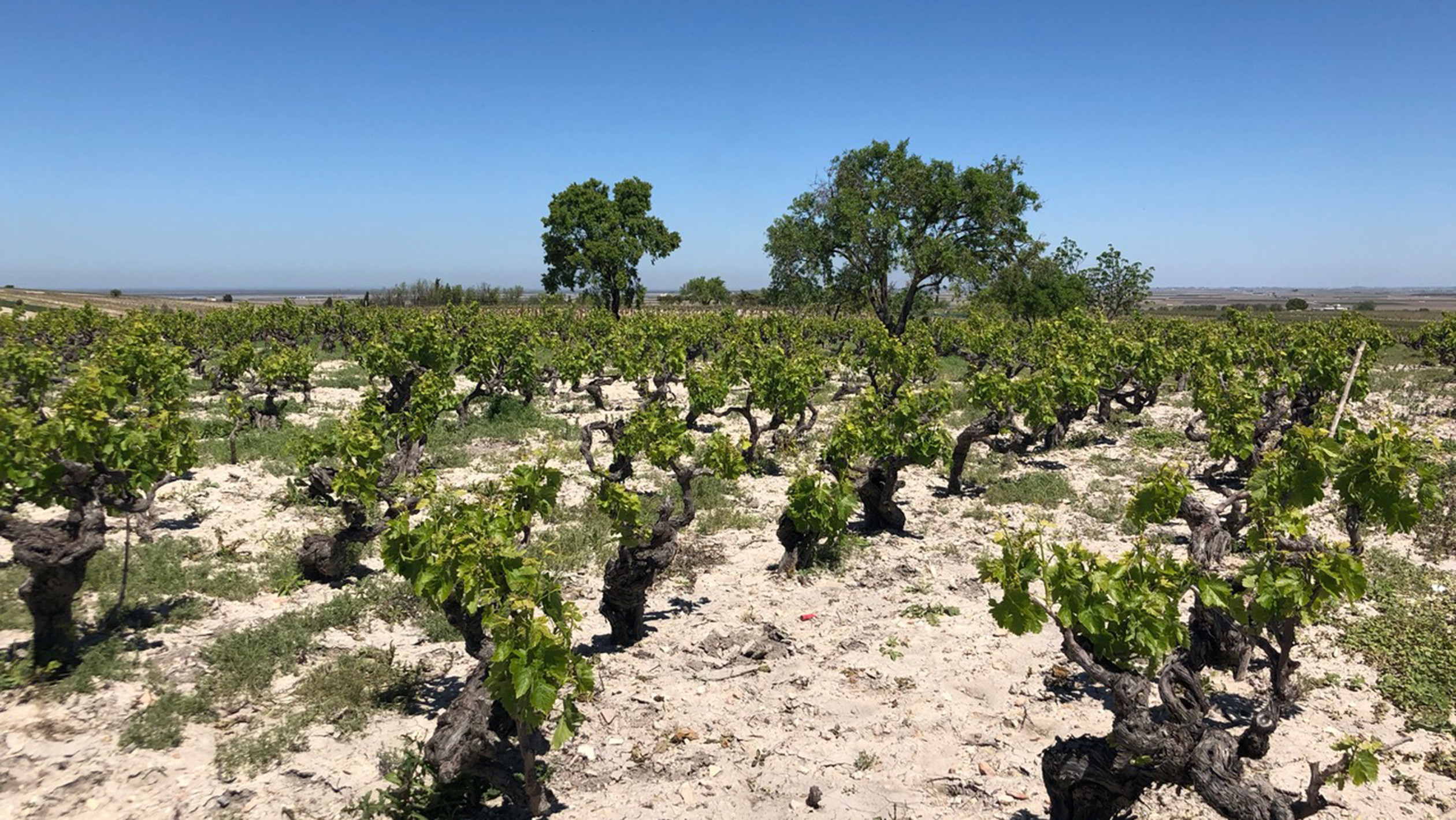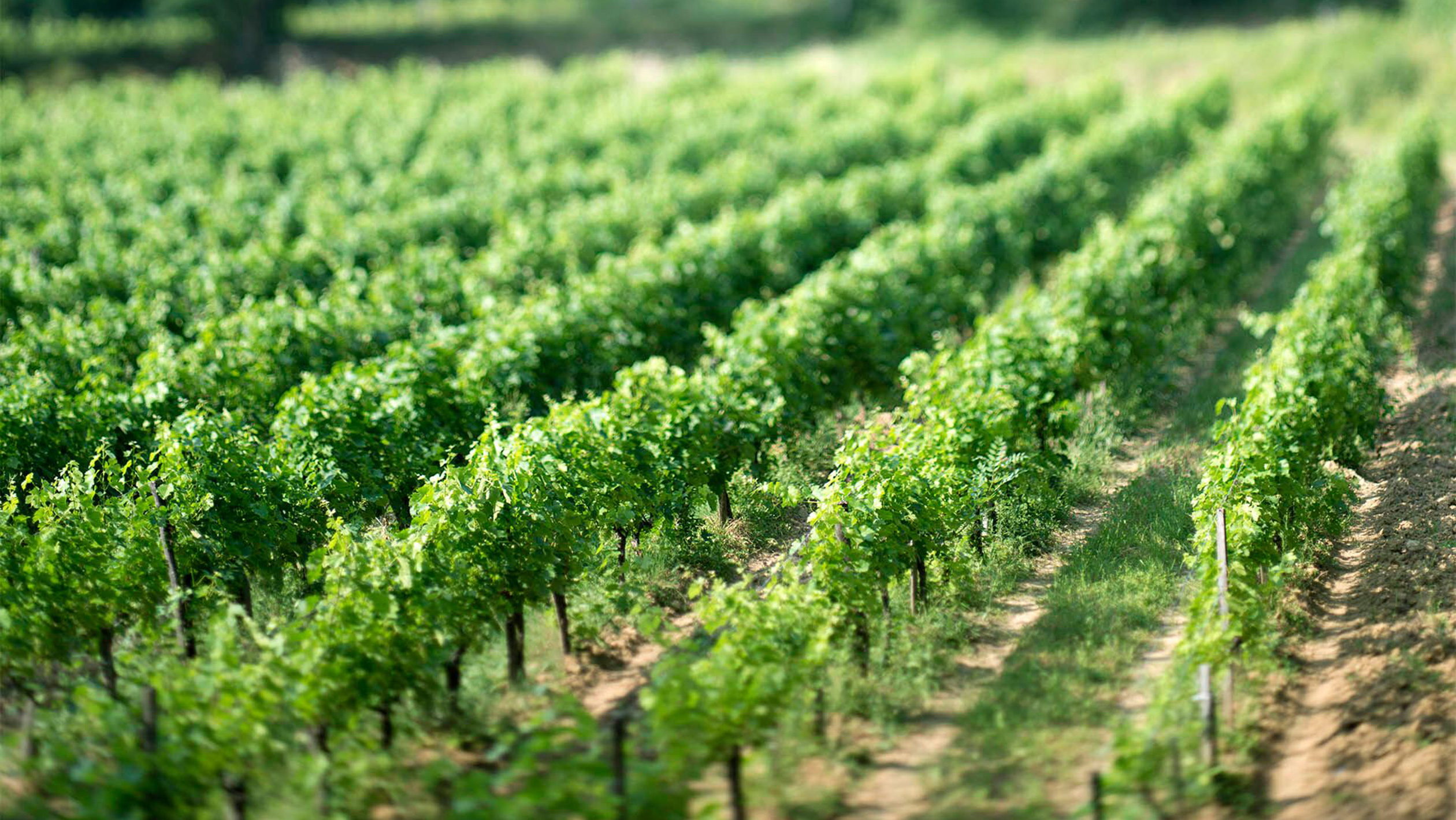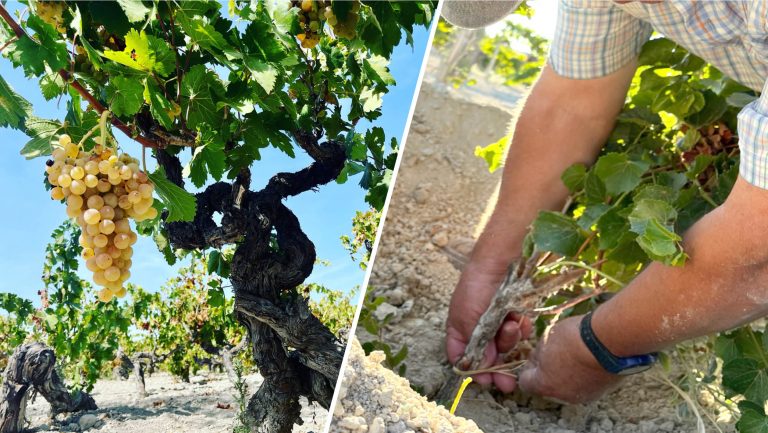The sun-drenched vineyards of Jerez produce some of Spain’s most famous wines. Here, the low-lying Palomino, Pedro Ximenez (PX), and Moscatel grapevines thrive in the region’s white albariza soils and hot climate, where agronomists like Gonzalez Byass vineyard director Manuel Delgado aim to achieve the best harvest each year. For him, these three varieties are the hallmark of sherry production, particularly the Palomino grape, which accounts for some 90 percent of his production.
”Palomino is very adapted to our climate with good disease resistance and it can withstand heat and drought,” says Delgado. “If I had to choose a second variety, I would take PX—despite lower yields, it has potential in hot, dry conditions.”
Yet change is afoot in this traditional winegrowing region, with new regulations expanding the available options to producers. In 2022, the Consejo Regulador permitted more native grape varieties that had nearly faded from memory, including Beba, Cañocazo, Mantúo Castellano, Mantúo de Pilas, Perruno, and Vigiriega.

Don’t miss the latest drinks industry news and insights. Sign up for our award-winning newsletters and get insider intel, resources, and trends delivered to your inbox every week.
By sanctioning these long-forgotten varieties, the Consejo hopes to promote diversity and innovation. The vines, so well-adapted to Jerez’s hot, harsh conditions, offer potential if given a chance to shine. Though new grapes may play only a small role, their approval signifies gradual evolution in this historic region.
But Jerez is not alone in its permittance of new grape varieties. In Bordeaux, producers have embarked on a project to study and introduce new varieties, including Marselan, Arinarnoa, Touriga Nacional, Castets, Alvarinho, and Liliorila. And in Champagne, the hybrid grape Voltis was approved, overturning the ban on hybrids in French wine. These expanded varieties were officially approved in 2021 as part of the Varieties of Interest for Climate Adaptation (VIFA) Initiative by France’s National Institute of Origin and Quality (INAO), according to Cécile Ha of the Conseil Interprofessionnel du Vin du Bordeaux.
For centuries, many of the world’s most prestigious wine regions have strictly limited grape varieties permitted for use in production. But faced with the growing challenges of climate change and consumer demand, several regions are buckling under pressure to allow a wider range of varieties into their hallowed vineyards. Some innovators have dipped their toes in experimenting with these newer options; others are cautious, remaining tentative until more time and exploration can be achieved. It begs the question: How will these newly approved varieties really impact classic regions like Jerez, Bordeaux, and Champagne?
Reasons for Change
In Bordeaux, the effort to explore alternatives in response to climate change began in 2007 with the VitAdapt project, led by the Institut des Sciences de la Vigne et du Vin. Their study of 52 Vitis vinifera varieties aimed to quantify climate responses like yield changes and drought resilience. Based on their recommendations, the six VIFA grapes were approved for limited use starting in 2021. Plantings are restricted to five percent of vineyard surface and 10 percent of final blends, renewable every 10 years.
“We’re looking for an alternative to Merlot, which is getting too alcoholic here. We look for freshness, lower alcohol, and disease resistance,” says Rachel Hubert, who co-owns Château Peybonhomme-les-Tours near Blaye with brother Guillaume Hubert. The duo planted Castets in 2022 and Touriga Nacional in 2015.
Beyond climate resilience, disease resistance is also crucial. In June 2022, four new fungus-resistant hybrid grapes were approved as VIFAs, including the white varieties Floréal Blanc, Sauvignac Blanc, and Souvignier Gris, and the red variety Vidoc Noir, according to Ha.
Further north in Champagne, adoption of a hybrid grape such as Voltis seems like sacrilege in a country where they were previously banned nearly 100 years ago. As is the case in Bordeaux, Voltis is currently limited to five percent of a vineyard and 10 percent of a blend. The hope is its resistance will reduce reliance on fungicides like copper sulfate.

“It is a way to enrich our biodiversity and it can be a great tool to reduce the carbon footprint and to save crops under a humid climate,” says Champagne Drappier enologist and viticulturist Hugo Drappier.
While climate change is part of the reason for the introduction of “new” varieties in Jerez—though heat has long been a factor in the climate, conditions are undoubtedly getting hotter and drier—the move is also about retaining the region’s heritage through these forgotten varieties.
“Before phylloxera there were 45 indigenous white varieties within the sherry industry which were used depending on each type of wine,” says Ramiro Ibáñez, the owner and winemaker of Cota 45. “But they had been disused and disappeared since 2010. Recovering these native varieties gives us the possibility of expressing a wider range of styles, which allows us to create wines with much more precision.”
It’s a gamble that has already caught the attention of buyers in the U.S. market. Justin Vann, the Houston-based wine director for Nancy’s Hustle, is a big fan of Ibáñez’s Cota 45 Agostado Cortado, made with Perruno, Uva Rey, and Palomino.
“That wine is the single most exciting sherry I’ve ever tasted,” says Vann. “Reviving old grapes and styles is a shot across the bow for the region and shows that removing limitations for sherry producers is a good idea, allowing innovation from pioneers that could impact the future.”
The Innovators Embracing New Grapes
Ibáñez, along with Willy Pérez, the owner and winemaker of Luis Pérez, have led the charge towards adopting Jerez’s forgotten grapes, even before the DO approved their use. In 2017, the duo revived M. Antonio de la Riva—a defunct label in the region—in part to showcase sherries using the now-approved grapes, like the Cuatro Cortados Veracruz, made with Perruno and Palomino.
Other producers share in the goal to preserve the heritage of Jerez, including Forlong, Callejuela, Muchada Leclapart, and Primitivo Collantes, who are all members of the Territorio Albariza Association, which, according to Ibáńez, has worked on these initiatives for several years.
However, limited uptake of the newly approved varieties is a common theme across all of these traditional regions. In Bordeaux, VIFA grapes cannot yet be named on labels, though some Bordeaux winemakers are beginning to experiment with new, climate-resilient grapes, planting around 140 hectares so far.
These early VIFA plantings help Bordeaux producers adapt and validate new grapes. With study and innovation, Bordeaux aims to maintain its quality and style amid climate shifts.
“Planting forgotten varieties is a good idea, although some were forgotten for [good] reasons,” says Hubert, who expects to use Château Peybonhomme-les-Tours’s Touriga Nacional in a 2022 vintage blend with Syrah, and the Castets in 2026.
In Graves, Pierre-Edouard Chatin, the owner and winemaker for Château de Respide, has farmed one hectare of Marselan since 2016. The traditional estate first sold it in bulk, but in 2022, Chatin bottled a 100 percent Marselan as a Vin de France.
“We don’t know yet if it will be Bordeaux styled, but that is the beauty of the mystery,” says Chatin. “These varieties give their best aromatic potential in warmer climates, which Bordeaux is becoming.”
And while reception of Voltis hasn’t been widespread in Champagne, Drappier planted Voltis as part of an experiment earlier in 2023, making it the first house with all authorized Champagne grapes planted.
“It is a first child of new generations of cépage,” says Drappier. “The first vines planted this year showed beautiful foliage without having received any treatment. It seems to have a good aging potential, but can be disappointing aromatically. We will see what happens, as the future will give us the answer.”
The Real Impact of New Varieties
Though the approval of new varieties in Bordeaux, Champagne, and Jerez has made plenty of headlines, will these grapes really have an impact on their respective regions? After all, far more producers have chosen to stay the course than dip a toe into new plantings. “We don’t have the impression that many others are doing similar experiments yet,” says Hubert. “It’s still early for these new varieties to be established, but if plantings increase significantly, we will of course see an undeniable change in the wines’ style.”
In Jerez, the broader sentiment towards these varieties is tentative. At Gonzalez Byass, Delgado isn’t rushing to plant anything new. “I will not plant a new grape just because it is allowed,” he says. “It needs to prove its value.” Instead, he relies on trusted Palomino and PX, which consistently perform from vintage to vintage.

Change will be slow, as most share this prudent approach. But by delicately expanding producers’ options, the Consejo allows for measured adaptation, balancing tradition with innovation.
Sherry expert Jesús Barquín, the co-author of Jerez, Manzanilla y Montilla: Vinos tradicionales de Andalucía, sees value in giving these varieties a shot and thinks more producers could adopt them over time. “While significant change is unlikely soon, allowing these pioneers to open new paths could have a wider impact down the road,” he says.
In Champagne, revisiting these rare varieties allows the region to gradually move towards increased sustainability and adaptation. Voltis (along with already approved but lesser-known selections such as Arbane and Petit Meslier) offers potential diversity, though most houses still favor the trusted grapes.
Historic houses like Billecart-Salmon remain cautious. “We recognize the CIVC’s efforts to identify disease-resistant grapes adapting to climate change,” says CEO Mathieu Billecart. “But more research is needed before replanting entire vineyards.”
Billecart feels Voltis needs time to prove longevity. For now, he relies on the 300 hectares of Chardonnay, Pinot Noir, and Pinot Meunier that the house works with. Though skeptical, Billecart isn’t against experimentation, especially when it comes to confronting climate change. “But that is only one of [many] solutions that may have to be deployed,” he says.
As these historic wine regions take tentative steps to embrace new varieties, the future remains uncertain—after all, these are recently established regulations, and it’s early days yet. But with care, study, and gradual adoption, the potential is there for innovation and adaptation while respecting tradition. Only the coming years of experimentation will reveal if these new vines—whether forgotten, transplanted, or newly created—can find a place in hallowed soils.

Dispatch
Sign up for our award-winning newsletter
Don’t miss the latest drinks industry news and insights—delivered to your inbox every week.
Jessica Dupuy is a wine, spirits, and food writer based in Austin, Texas, whose credits include work in Texas Monthly, Imbibe magazine, Wine Enthusiast magazine, Sommelier Journal, and The Tasting Panel magazine and with the Guild of Sommeliers. A Certified Sommelier, Certified Specialist of Wine, and Certified Specialist of Spirits, she holds the Diploma in Wines through the Wine & Spirits Education Trust. Dupuy keeps her palate sharp through travel, reading, and endless tasting.






